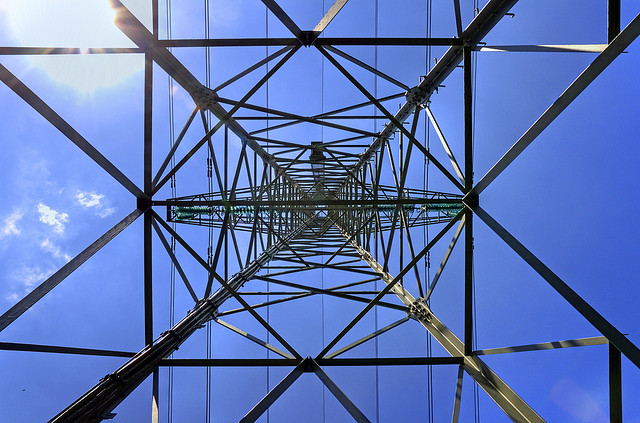
How do you neutralize a negative word, amplify the voices of thousands or help business leaders make key connections they otherwise may have missed?
When it comes to the discussion of energy development in Colorado, there have been plenty of questions asked and opinions offered. But when you’re in the business and have a unique opportunity to share your experience and knowledge, how do you get your point of view out to the masses—not just to your
industry colleagues or the business community at large?
Three organizations have taken different approaches to engaging the public on energy in Colorado. And what it comes down to for any effort to raise awareness: Content is king.
“Information is power and you want people to have accurate information so they can use that information accordingly,” said Joe Conrad, the founder and CEO of communications agency
Cactus, which has worked on countless public engagement efforts—from men’s mental health to
recreational marijuana regulation.
Taking on Four-Letter Words
Coloradans for Responsible Energy Development (CRED) launched in 2013—a time when efforts to ban fracking swirled around Front Range communities and the abbreviated phrase for hydraulic fracturing—a means of extracting oil and gas more than a mile below the earth’s surface—was considered a “four-letter word,” said CRED Communications Director Jon Haubert.
“What we were clearly seeing was a disconnect between the industry, basic information about energy and the general public,” he said.
Creating a public-facing education effort around energy development had been in the works for
years, and as consumers asked more questions, oil and gas industry leaders (CRED is funded by Anadarko Petroleum Corporation and Noble Energy) came together to create a space where the industry could present scientifically-backed, factual information about energy development and let consumers make their own decisions about fracking.
With over 30,000 followers on Facebook and Twitter combined, social media has offered additional opportunities for CRED to share information about fracking that goes beyond their traditional billboards and 30-second ads.
“It’s fun to create that environment organically where people have questions and we literally step back and let others chime in with answers—it’s created a real, meaningful dialogue,” Haubert said. “Real Coloradans and industry employees who do this for a living have been one of our most effective messengers in our effort.”
And, social media offers a testing ground for messages before CRED creates large media campaigns, such as its TV ad about energy independence with Jim Davis, an FBI agent who was part of the team that captured Saddam Hussein. It’s an additional layer of testing messages that “confirms we’re on the right
track,” Haubert said.
Amplifying Voices
More than 100,000 people have signed on to the coalition Keep Electricity Affordable (KEA), whose aim is just that—and to lift the voices of consumers who may be affected by cost fluctuation.
Founded by co-op and rural electric associations from Colorado, Nebraska, New Mexico and Wyoming, KEA is focused on ensuring consumers continue to have access to reliable, accessible electricity, particularly in rural areas. Often, that means focusing in on regulations by hosting telephone town halls and encouraging the public to weigh in.
 “There’s a lot of attention drawn to the energy industry, but sometimes there’s not as much attention drawn to the energy regulations proposed that can have an effect on energy consumers, and part of the KEA campaign is to make sure those complex regulatory issues are understood by the public and by business,” said Lee Boughey, the senior manager of corporate communications and public affairs for Tri-State Generation and Transmission Association, a KEA supporter.
“There’s a lot of attention drawn to the energy industry, but sometimes there’s not as much attention drawn to the energy regulations proposed that can have an effect on energy consumers, and part of the KEA campaign is to make sure those complex regulatory issues are understood by the public and by business,” said Lee Boughey, the senior manager of corporate communications and public affairs for Tri-State Generation and Transmission Association, a KEA supporter.
KEA has found success sharing infographics that highlight the dollars and cents of electricity and how that impacts every part of a person’s day.
“(Consumers) need to understand the issues that could affect their pocketbooks,” Boughey said.
Breaking Down Barriers
Other campaigns focus on getting people from diverse walks of life together in one room.
At its inaugural Colorado Energy Expo, the Colorado Energy Coalition, an affiliate of the Metro Denver Economic Development Corporation, worked to raise awareness about Colorado’s diverse energy industry, welcoming some 3,000 members of the public last May.
As they prepare for their second year, Energy Industry Director Scott Prestidge said they hope to build on the business-to-business connections from across the energy industry—from oil and gas, coal and mining to clean technology and efficiency-focused companies—that were spawned last year.
“This event breaks down your typical industry silos and gives companies a chance to identify new opportunities,” Prestidge said, adding that when it comes to industry networking, folks often stay with members of their sector. With the Colorado Energy Expo, Prestidge said there’s an emphasis placed on new connections and collaboration across energy sectors.
The 2015 Colorado Energy Expo will be open from 8 a.m. to 5 p.m. on Wednesday, May 13. This year organizers are expecting as many as 5,000 attendees.
Businesses Lean In
When it comes to engaging the public, starting with building awareness to eventually changing a person’s behavior or opinion, the process can take years, said Conrad, whose firm has worked to engage the public on a variety of issues—perhaps most notably in areas of health—through broad campaigns that include billboards and commercials, as well as interactive websites and social media.
Though traditional outreach through billboards and ads can make an impact, it is that two-way interaction that moves the needle. And, that’s why digital media goes a long way in achieving long-term goals.
“There’s a level and depth of breadth … and there can be an ongoing dialogue that isn’t one-sided and more short-term but it’s more long and two-way, and I think that’s very powerful when you’re trying to get across information,” Conrad said.
So where do business leaders come in?
“It’s very valuable for business leaders and thought leaders and those at various levels of government to understand these issues so that they have a better foundation for the decisions they make,” Boughey said.
Haubert agreed, adding that they can serve as messengers to a variety of people. In particular, he says the business community can speak to the collaborative work done by recently concluded oil and gas task force and differentiators for Colorado—such as our tough regulations on energy development.
“Colorado’s looked to as a model that’s focused on reasonable and meaningful solutions,” Haubert said. “That’s definitely a message we need to get out.”
It’s one that echoes Chamber values of how business is done in Colorado.
“It’s that intrinsic western value we all seem to have in us, where we roll up our sleeves and get to the bottom of an issue and fix the problem,” Haubert said. “That what we do in Colorado. We bring everyone together.”
But, ultimately what matters most is having a place to ensure people can learn more than what’s discussed over coffee or at the water cooler—something each of these organizations has focused on.
“People in the west are more energy literate,” Boughey said, “but it always helps to provide good information so that people can make their own decisions about these issues.”
Sara Crocker is the communications manager for the Chamber.
[Photo by Bert Kaufmann]
